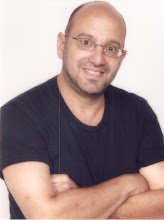[posted 6/1/11 to http://wrestlingbabylon.wordpress.com]
http://www.blogger.com/img/blank.gif
On the subject of what is being done on behalf of the untold number of former athletes who are walking around with serious brain injuries (though many are capable of doing little else), I caught up with Brent Boyd.
Following the suicide of Dave Duerson, I told the full story of the confrontation between Boyd and Duerson in a Congressional hearing room in 2007, and of the latter’s less-than-helpful service on the National Football League’s disability benefits board, a joint effort of the league and the NFL Players Association. See “‘Dave Duerson Knew Nothing About Concussions and Players’ Best Interests’ – My Exclusive Interview With Ex-Minnesota Viking Brent Boyd,” February 24, http://wrestlingbabylon.wordpress.com/2011/02/24/%E2%80%98dave-duerson-knewhttp://www.blogger.com/img/blank.gif-nothing-about-concussions-and-players%E2%80%99-best-interests%E2%80%99-%E2%80%93-my-exclusive-interview-with-ex-minnesota-viking-brent-boyd/.
Boyd, founder of the advocacy group Dignity After Football (http://dignityafterfootball.org), also is on the advisory board of Chris Nowinski’s Sports Legacy Institute. However, Boyd is highly critical of the Boston chronic traumatic encephelopathy research team’s acceptance of a $1 million NFL grant to support the Center for the Study of CTE at Boston University. Boyd and others believe that this skews research and compromises advocacy.
Last year Robert Stern, Nowinski’s co-director at the center, co-authored a study of an innovative imaging technique to determine if CTE is detectable in living people – a key component of the search for cures. (At the moment the disease can be isolated only from postmortem brain tissue.) The findings from this round of “virtual biopsies” suggested that all five athletes who participated – three football players, one boxer, and one wrestler – have CTE. See “New technique targets ex-athletes’ head injuries,” December 1, 2010, http://www.cbc.ca/news/health/story/2010/12/01/brain-injury-virtual-biopsy-nfl.html.
Brent Boyd, 54, whose six-year NFL career ended in 1986, was one of the football players who underwent a virtual biopsy. As a result, he considers himself one of “the only yet identified living persons to walk the earth knowing they have deadly CTE.”
Boyd also thinks he was “a guinea pig” who was treated brusquely and received no counseling or support in the wake of the finding. “It was like, ‘Here’s lunch money, you have significant CTE, and here are your return flight tickets. Thanks for coming!’”
The ordeal “has left me sleepless for months,” Boyd said. “What am I supposed to do with this information?”
Boyd said that recent comments on this blog by Mike Benoit, father of the late World Wrestling Entertainment star Chris Benoit, captured the frustrations of the living CTE community. Benoit said, “Everyone loves to be in front of the cameras talking about the latest case of CTE, but no one is talking about the people who are currently suffering. The research world is an old boys’ club. How many more brains do we need to prove that concussions can cause CTE?”
Chris Nowinski is out of the country. This morning I spoke with Dr. Robert Cantu, the leader of the Boston CTE research team. Cantu emphasized that he was not involved in the “virtual biopsy” study, which was presented last December in Chicago at the annual conference of the Radiological Society of North America.
“We can have an index of suspicion that certain individuals have CTE, and given Brent’s history of brain trauma, the level of suspicion is very high,” Cantu said. “But we still don’t yet have blood markers or any other way of identifying CTE with certainty, except through finding tau protein in the brain tissue of dead people.”
Cantu added that as a physician – which many CTE researchers are not – he regards himself as having doctor-patient relationships and is sensitive to the need for treating research subjects with dignity and humanity.
Cantu also acknowledged that counseling and support are missing pieces of concussion reform work: “It would be ideal for SLI to have a personal advocacy wing. That is not as easy to pull off as it may sound. On almost a daily basis, SLI gets contacted by people offering help in these areas, but before accepting that help, we must determine their level of qualifications for assisting those with brain trauma with their cognitive and other life problems. Without a doubt, building that network is a very important task as research and advocacy move forward.”
Irv Muchnick
Subscribe to:
Post Comments (Atom)

No comments:
Post a Comment